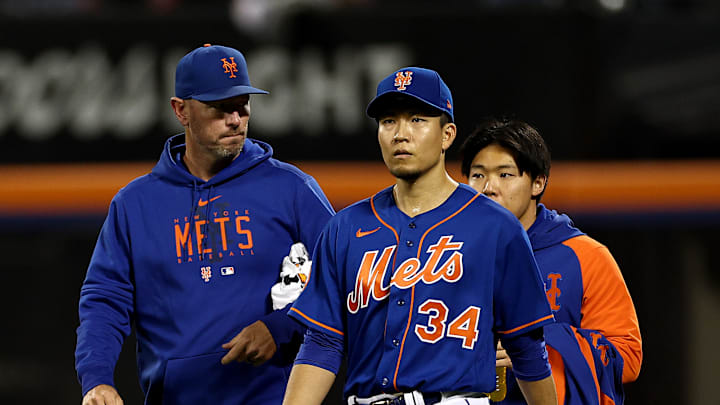A lot of great information came out of David Stearns this week and one of the least surprising was the team’s interest in a six-man rotation. The New York Mets used one regularly last season. It’s something to expect again this year.
#Mets going with a 6th man rotation at times throughout the course of 2024 per David Stearns
— Tyler (@WardyNYM) February 12, 2024
Shouldn’t come as a surprise to anyone with how this rotation consists of
Herein lies the problem. While the options are abundant and obvious with Joey Lucchesi, Tylor Megill, and Jose Butto as three of the top choices plus any prospects who may showcase their talents later on, roster flexibility isn’t a strength of the Mets.
The purpose of a six-man rotation would be to offer an additional off-day. From April 5 through April 17, they don’t have a single off-day. The call for a sixth starter could come early. How will the Mets handle it?
Shintaro Fujinami is the key to a successful six-man rotation
What made the Shintaro Fujinami signing an especially satisfying one are the minor league options he has. As an international free agent last year, he didn’t come to MLB with any used up service time where optioning him to the minors would require the Mets to designate him for assignment and pass through waivers. Many of the other relievers expected to make the Opening Day roster are out of options. Rather than get dark and hope for an injury to allow the Mets the ability to promote a sixth starter, a short-term demotion of Fujinami appears to be the immediate plan.
Injuries are bound to happen and at least one of the relievers on the Opening Day roster seems lined up to be an early-season DFA candidate. Is it really worth having a guy on the roster for a week or two just to lose him so quickly soon after the year begins? If so, the Mets are essentially punting with the roster spot and carrying a reliever for the sake of mop-up duty.
Kodai Senga is the pitcher we're most curious to see perform on normal rest. He was more effective last year with the more rest he got. The Mets only put him on the mound after the typical four days rest three times. The result was a 1-0 record and 4.61 ERA. Compared to an 8-5 record and 3.04 ERA in 17 starts on five days rest and a 3-2 record with a 2.45 ERA in 9 starts on six days or more, we see a trend.
The rest of the rotation could benefit from extra rest, too. Health concerns for Luis Severino. That plus age included with Jose Quintana. MLB as a whole is trending toward a six-man rotation. The trouble is as much as teams would like to have an extra starter, the additional bullpen arm is helpful, too.
A six-man rotation with this Mets roster isn't easy
Going into the year assuming everyone will be healthy is a faulty plan, but it’s also essential to prepare themselves for a situation where Fujinami is their lone optional player. Phantom IL stints were often a way around this in the past, however, following the placement of Billy Eppler on the ineligible list, the Mets may think twice about overusing that tactic.
Fujinami is the safeguard from having to DFA someone too soon. The Mets can send him to the minors and recall a starter in his place for a day. He wouldn’t be immediately available for a promotion after, due to the 10 day rule before a player can be recalled after a demotion. The Mets will be constantly shuffling the pitching staff. An early April stretch without an off-day in sight will be the first preview.
Hopefully any April showers to wash away a game and create a doubleheader will time itself right. A doubleheader at the start of a period without an off-day is far less helpful and just delays the inevitable. It’s a tight space for the team to operate with a six-man rotation. It’s better than having a bunch of scrubs in the bullpen.
